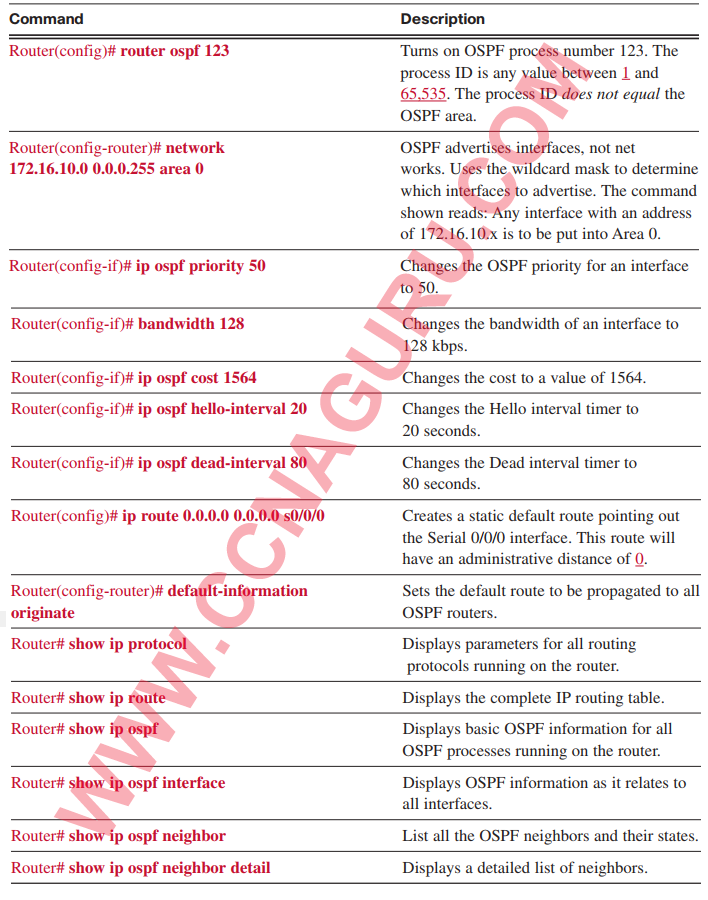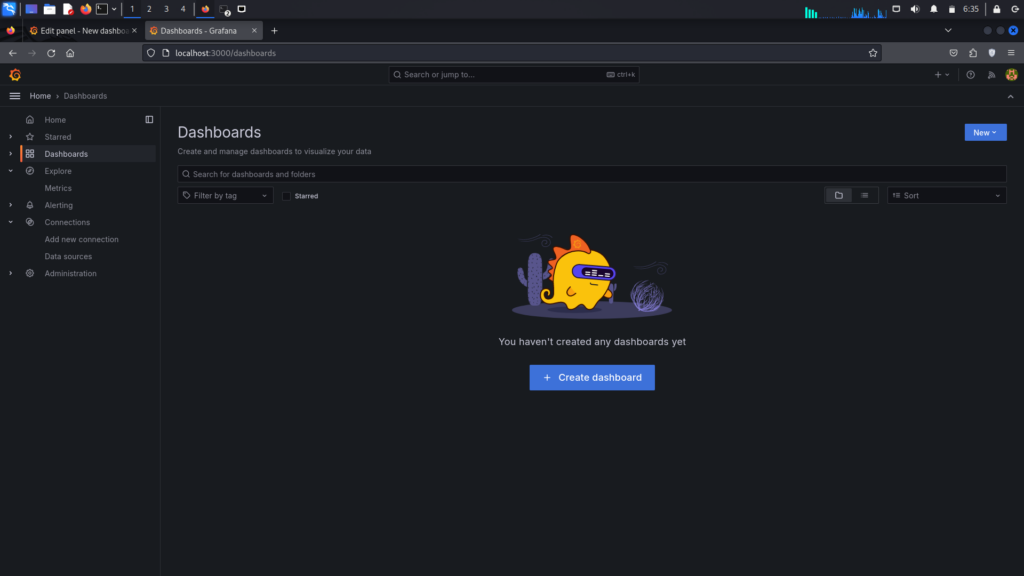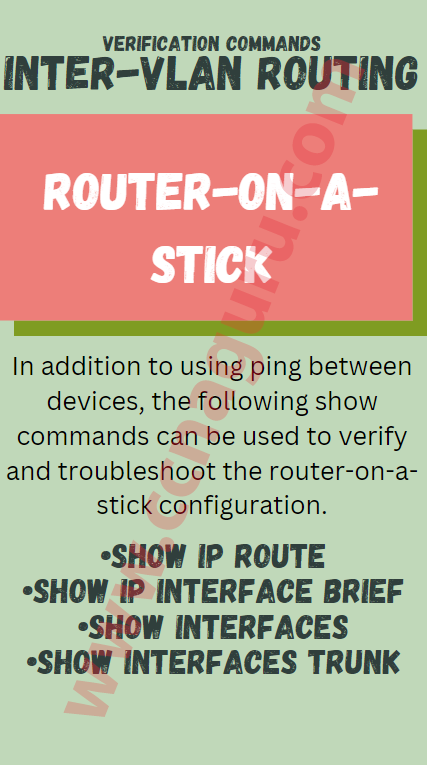To configure and monitor OSPF (Open Shortest Path First) on a Cisco router, you can use various commands. These commands allow you to enable OSPF, modify OSPF settings for interfaces, view OSPF information, and more. Below is a list of commonly used OSPF commands along with their details:
| Command | Details |
|---|---|
| router ospf 123 | Turns on OSPF process number 123. The process ID is any value between 1 and 65,535. The process ID does not equal the OSPF area. |
| network 172.16.10.0 0.0.0.255 area 0 | OSPF advertises interfaces, not networks. Uses the wildcard mask to determine which interfaces to advertise. The command shown reads: Any interface with an address of 172.16.10.x is to be put into Area 0. |
| ip ospf priority 50 | Changes the OSPF priority for an interface to 50. |
| bandwidth 128 | Changes the bandwidth of an interface to 128 kbps. |
| ip ospf cost 1564 | Changes the cost to a value of 1564. |
| ip ospf hello-interval 20 | Changes the Hello interval timer to 20 seconds. |
| ip ospf dead-interval 80 | Changes the Dead interval timer to 80 seconds. |
| ip route 0.0.0.0 0.0.0.0 s0/0/0 | Creates a static default route pointing out the Serial 0/0/0 interface. This route will have an administrative distance of 0. |
| default-information originate | Sets the default route to be propagated to all OSPF routers. |
| show ip protocol | Displays parameters for all routing protocols running on the router. |
| show ip route | Displays the complete IP routing table. |
| show ip ospf | Displays basic OSPF information for all OSPF processes running on the router. |
| show ip ospf interface | Displays OSPF information as it relates to all interfaces. |
| show ip ospf neighbor | List all the OSPF neighbors and their states. |
| show ip ospf neighbor detail | Displays a detailed list of neighbors. |










